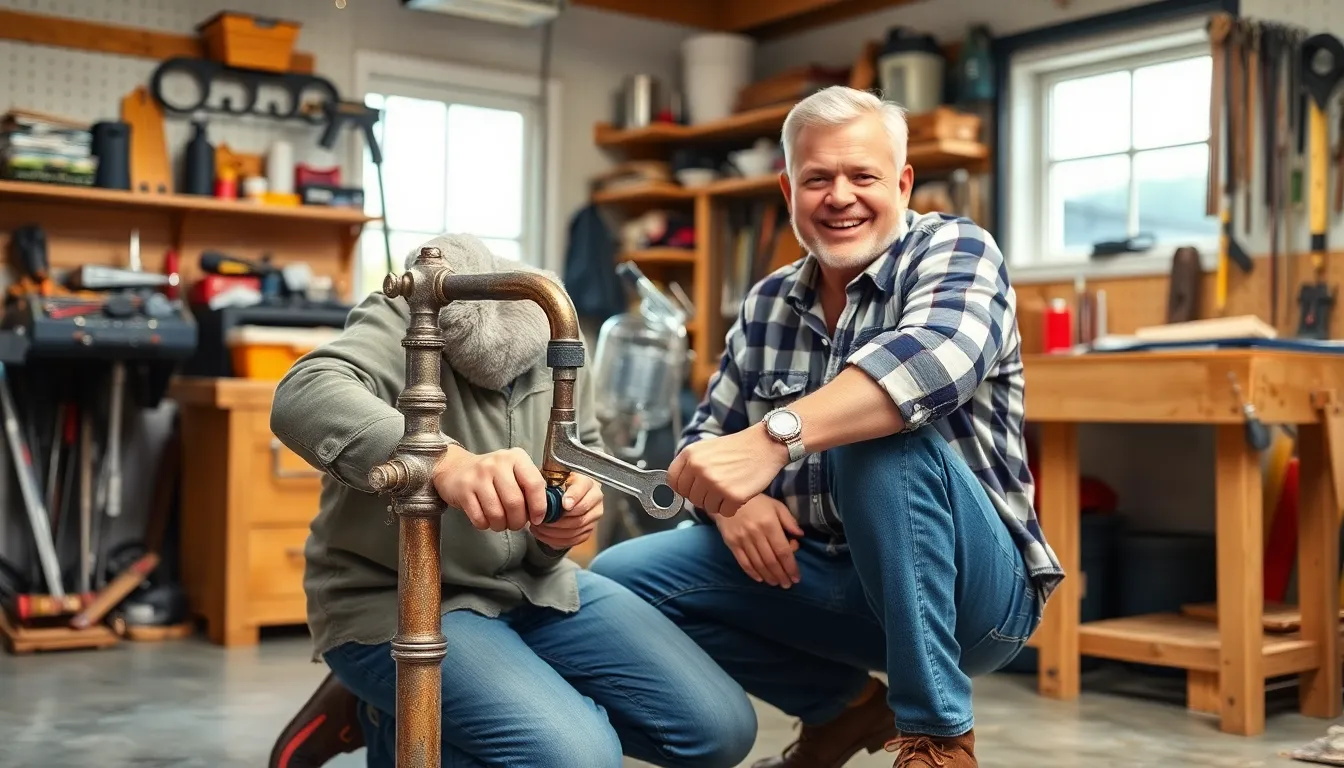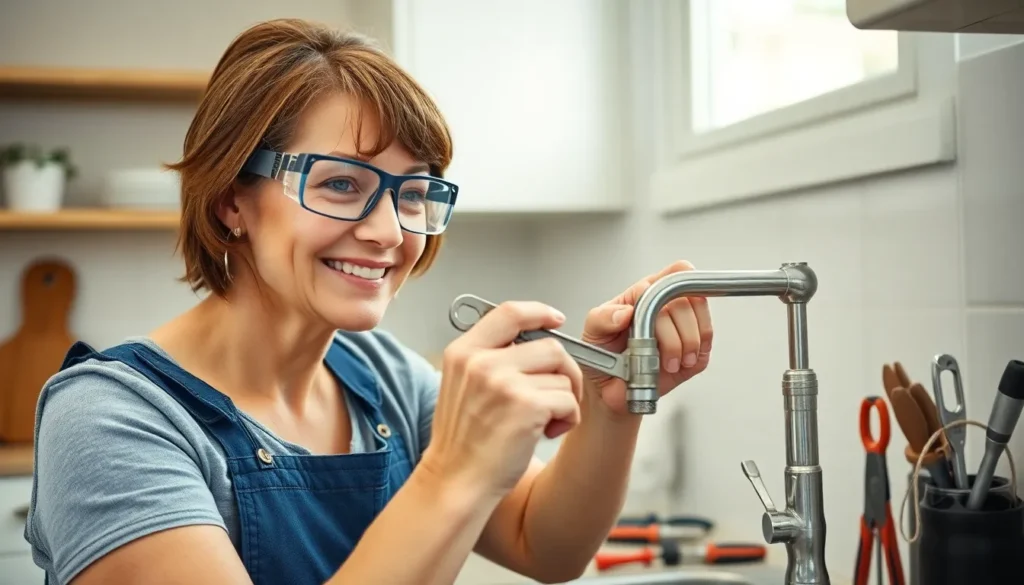In a world where everything seems to break at the most inconvenient times, DIY repair is like a superhero in disguise. Why wait for that overpriced technician when a little elbow grease and some creativity can save the day? Whether it’s a leaky faucet or a stubborn piece of furniture that just won’t cooperate, tackling repairs yourself can be both rewarding and wallet-friendly.
Imagine the satisfaction of fixing something with your own hands. Not only will you impress your friends with your newfound skills, but you’ll also gain a sense of accomplishment that no store-bought item can provide. Plus, who doesn’t love the thrill of turning a disaster into a masterpiece? So grab your tools and let’s dive into the world of DIY repair, where every mishap is just an opportunity waiting to be transformed.
Table of Contents
ToggleWhat Is DIY Repair?
DIY repair involves taking initiative to fix items around the home without professional help. Homeowners tackle projects ranging from leaking faucets to broken furniture. The process emphasizes self-sufficiency, saving money while gaining skills.
Various tools can assist in these repairs, including screwdrivers, wrenches, and hammers. Using online tutorials or instructional videos enhances the learning experience. Local hardware stores often provide essential materials and advice for specific tasks.
Many benefits accompany DIY repair. It fosters creativity and problem-solving abilities. Accomplishing a task independently brings satisfaction and boosts confidence. Learning to repair items encourages sustainable living by reducing waste and prolonging the lifespan of materials.
Community resources may also support individuals interested in DIY repair. Workshops offer hands-on experience and networking opportunities. Online forums connect enthusiastic DIYers to share tips and tricks.
Different skills acquired through DIY repair projects translate to various aspects of life. Completing tasks reinforces resilience and adaptability. Furthermore, cultivating these skills often leads to opportunities for further home improvement projects.
Consideration for personal safety should always accompany DIY repair endeavors. Using proper protective gear minimizes risks. Following manufacturer guidelines and instructions ensures successful outcomes.
Benefits of DIY Repair

DIY repair delivers a range of advantages that enhance both personal and financial well-being.
Cost Savings
Cost savings rank high among the benefits of DIY repair. Homeowners save on labor fees by tackling projects themselves. Materials often cost less when bought directly, avoiding added professional markups. For example, fixing a leaky faucet might only require under $20 in parts, compared to paying a plumber upwards of $100 for a basic service call. Simple repairs reduce monthly expenses while keeping budgets in check. Many find they can accomplish tasks efficiently, minimizing the need for recurring repairs and expenses. Choosing DIY often transforms what might be a costly service into a manageable project.
Skill Development
Skill development serves as another key benefit of DIY repair. Engaging in home improvement tasks cultivates valuable practical skills. Gaining hands-on experience builds confidence in various areas, from plumbing to woodworking. Each completed project enhances one’s ability to troubleshoot future issues. DIY enthusiasts often discover newfound creativity while solving problems, leading to innovative solutions. Learning how to use tools properly constitutes an essential aspect of these projects, making individuals more self-sufficient. Networking with local workshops or online tutorials fosters a sense of community, encouraging continuous growth and learning.
Common DIY Repair Projects
Engaging in DIY repair projects can lead to substantial savings and skill enhancement for homeowners. Various tasks lend themselves well to this hands-on approach, making repairs manageable.
Home Repairs
Home repairs encompass a wide range of tasks that individuals can tackle without professional help. Fixing a leaky faucet stands out among common projects, requiring only basic tools and under $20 in parts. Other tasks include patching drywall and replacing light fixtures. Homeowners often find resources online, including step-by-step videos and forums, to guide them through each project. Repairing squeaky floorboards or squeaky doors also falls under the home repairs umbrella, providing immediate satisfaction. Completing these projects not only improves living spaces but also boosts confidence in problem-solving abilities.
Car Maintenance
Car maintenance DIY projects are both practical and rewarding. Simple tasks like changing oil can save vehicle owners significant amounts of money, with materials costing around $30 to $50. Rotating tires and replacing air filters also are easy undertakings for those willing to learn. Resources exist online, such as instructional videos and guides, to help navigate each task. Additionally, cleaning the battery terminals or replacing wiper blades contributes to vehicle longevity and performance. Engaging in these projects promotes self-sufficiency while fostering a deeper understanding of automotive care.
Tools and Materials Needed
DIY repair projects require specific tools and materials to ensure success. Understanding what’s necessary simplifies the process and enhances results.
Essential Tools
Screwdrivers, pliers, and hammers form the backbone of any DIY toolkit. Anteater pliers assist in gripping or twisting materials, while a reliable hammer drives nails with precision. Including a measuring tape helps achieve accurate dimensions during projects. A utility knife proves invaluable for cutting various materials. Power tools, like drills and saws, enable efficient completion of larger tasks. Safety goggles protect against debris, ensuring personal safety.
Recommended Materials
Choosing the right materials significantly impacts project outcomes. Common items include wood screws, nails, and adhesives for structural repairs. Patching compounds are essential for drywall repair, providing a seamless finish. Caulk seals gaps around windows and doors, enhancing energy efficiency. Paint, brushes, and rollers allow for refreshing room aesthetics. When tackling plumbing issues, fittings and seals specifically designed for the task are needed. Prioritizing quality materials leads to durable solutions that stand the test of time.
Tips for Successful DIY Repair
Successful DIY repair requires careful planning and awareness of safety. Engaging in well-thought-out preparations enhances project outcomes.
Planning Your Project
Successful DIY projects start with a solid plan. Research necessary steps and gather all needed tools and materials beforehand. Create a list of tasks to streamline the process, making it easier to track progress. Define realistic timelines to avoid frustration and ensure completion. Break larger tasks into smaller, manageable steps, which helps maintain focus and motivation. Review available online tutorials for guidance specific to your project type. Identifying potential challenges ahead of time contributes to smoother execution and improved results.
Safety Considerations
Prioritize safety throughout any DIY repair. Always wear protective gear, including safety goggles and gloves, to prevent injuries. Create a clutter-free workspace to reduce the risks associated with tripping or tool mishaps. Read and follow manufacturer guidelines for tools and materials to ensure safe and effective use. Ensure proper ventilation when working with chemicals or paint to avoid harmful fumes. Additionally, have a first aid kit on hand to address any minor accidents quickly. Maintain awareness of surroundings and check for hazards, especially when using power tools.
Embracing DIY repair not only transforms homes but also empowers individuals with valuable skills and confidence. Each project completed serves as a testament to one’s ability to tackle challenges head-on. As homeowners take initiative to fix issues themselves they cultivate creativity and enhance problem-solving abilities.
The journey of DIY repair is filled with learning opportunities and personal growth. By engaging in these projects individuals contribute to sustainable living while enjoying the satisfaction of self-sufficiency. With the right tools and a commitment to safety anyone can embark on this rewarding path.

